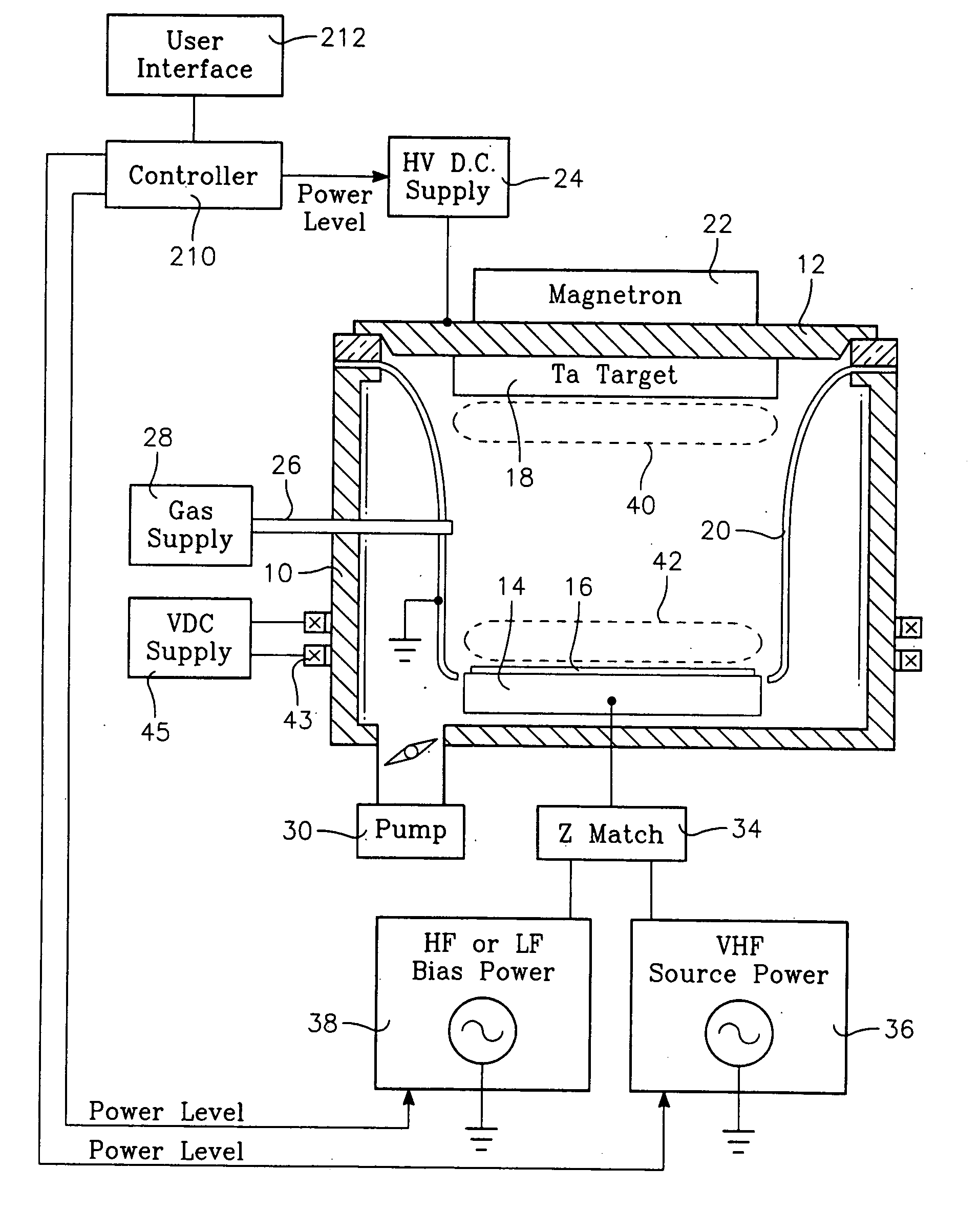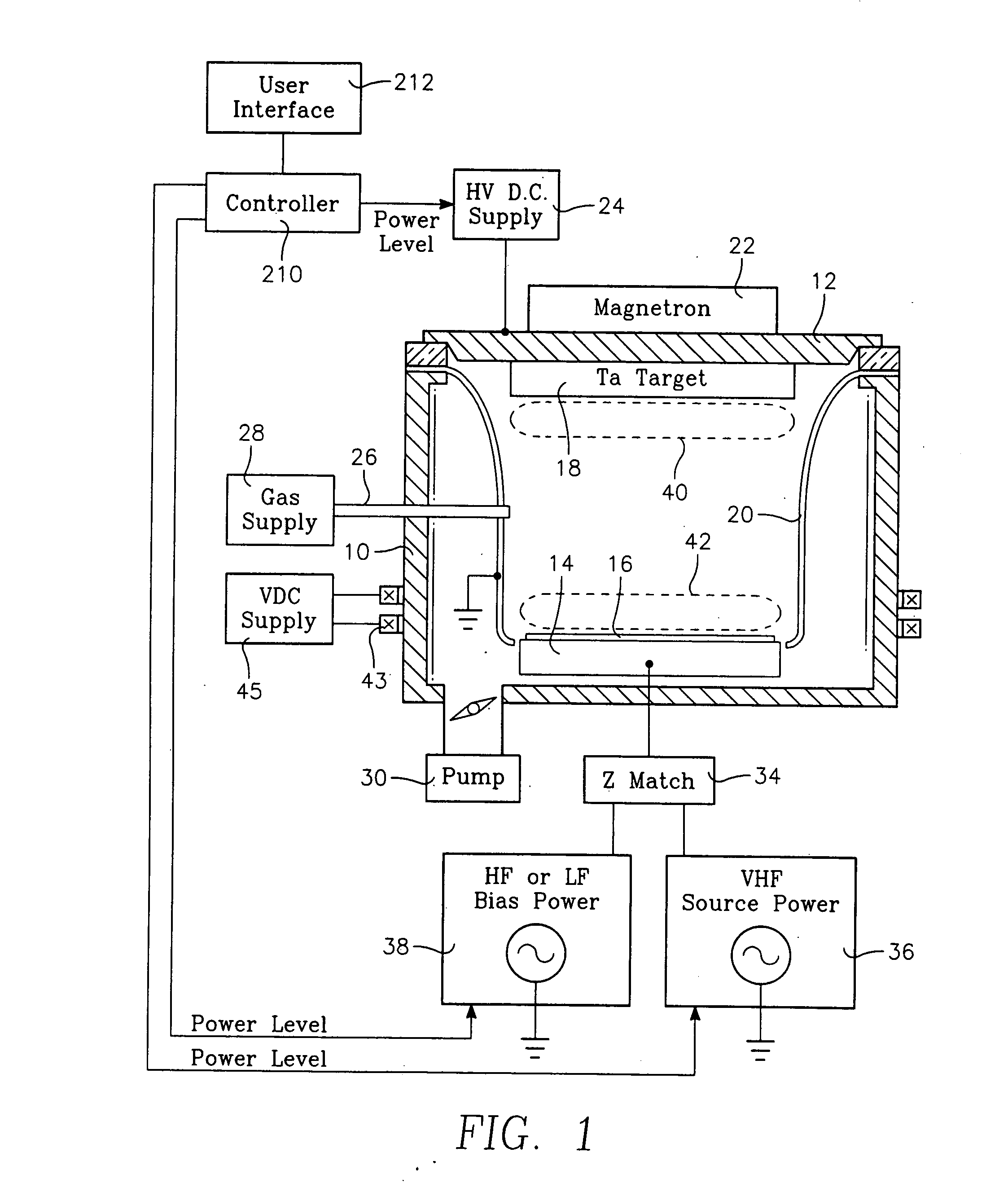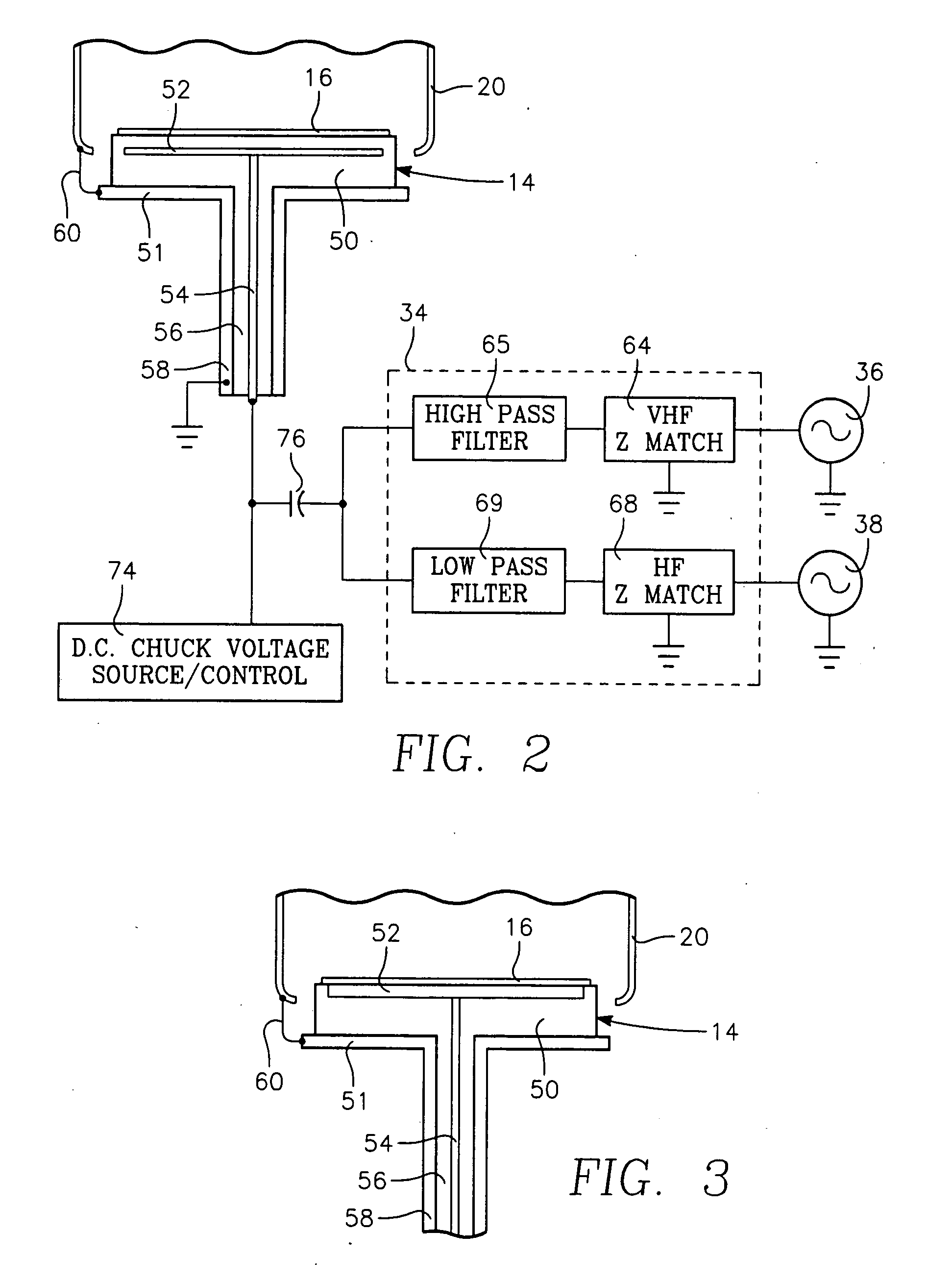Physical vapor deposition plasma reactor with RF source power applied to the target
a plasma reactor and vapor deposition technology, applied in the direction of vacuum evaporation coating, electrolysis components, coatings, etc., can solve the problems of consuming production time, high production cost, adding cost,
- Summary
- Abstract
- Description
- Claims
- Application Information
AI Technical Summary
Benefits of technology
Problems solved by technology
Method used
Image
Examples
Embodiment Construction
[0040] A plasma reactor forms barrier layers (such as a tantalum / tantalum nitride film or titanium / titanium nitride film) for conductors (such as copper, for which the barrier should be tantalum / tantalum nitride) in trenches or through vias between successive interconnection layers of an integrated circuit. The plasma reactor is capable of both physical vapor deposition and of highly selective re-sputtering to remove barrier material from the exposed horizontal surfaces of the underlying conductor constituting the floor of the via. Significantly, the reactor accomplishes all this without an internal coil that had previously been required for a fully and precisely controllable re-sputtering step. Instead, a plasma is formed near the wafer to perform the re-sputtering step. For this purpose a process gas such as argon may be introduced and source power is applied to the wafer at an RF frequency effective for capacitively coupling energy to kinetic electrons to excite argon plasma ions...
PUM
| Property | Measurement | Unit |
|---|---|---|
| Diameter | aaaaa | aaaaa |
| Frequency | aaaaa | aaaaa |
| Power | aaaaa | aaaaa |
Abstract
Description
Claims
Application Information
 Login to View More
Login to View More - R&D
- Intellectual Property
- Life Sciences
- Materials
- Tech Scout
- Unparalleled Data Quality
- Higher Quality Content
- 60% Fewer Hallucinations
Browse by: Latest US Patents, China's latest patents, Technical Efficacy Thesaurus, Application Domain, Technology Topic, Popular Technical Reports.
© 2025 PatSnap. All rights reserved.Legal|Privacy policy|Modern Slavery Act Transparency Statement|Sitemap|About US| Contact US: help@patsnap.com



